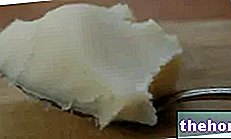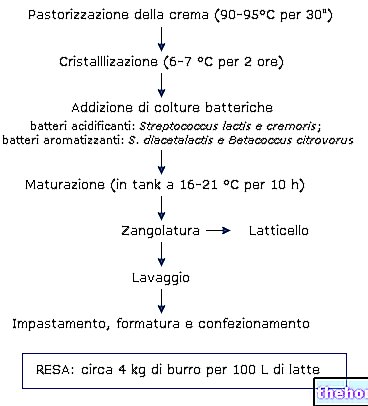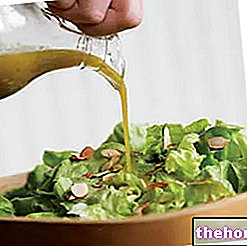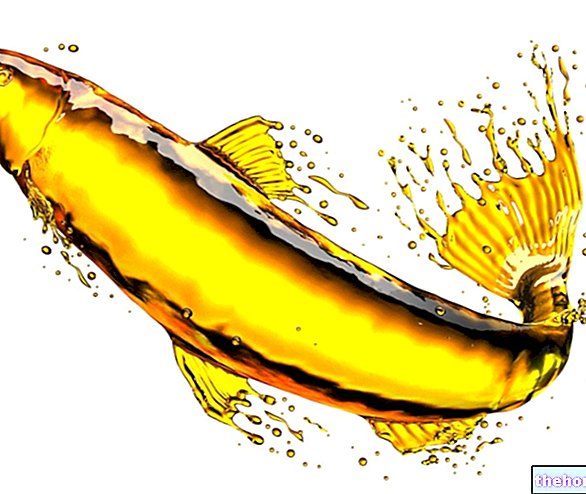Hazelnut or avellana
L"hazelnut oil is a seasoning oil extracted from the fruit, or rather from the "achene, of the hazelnut tree, known in botany as Corylis avellana (family Corylaceae or Betullacee, genus Corylus).

Hazelnut is a achene also cataloged as "dried fruit"; from a nutritional point of view it contains large quantities of monounsaturated lipids (MUFA - 45.7g / 100g of edible part), polyunsaturated (PUFA - 7.9g) and only a small part of saturated lipids (4.5g); proteins are around 15g and carbohydrates around 16.7g. Hazelnuts have good concentrations of vitamin E (tocopherols - 15.4mg), some water-soluble vitamins of group B (especially thiamin, riboflavin, niacin and pyridoxine), antioxidants (flavonoids and phytosterols), selenium (2.4µg), calcium (114mg ) and reduced percentages of water (5.31g); these characteristics, associated with the "cold" extraction method (such as "virgin olive oil") allow the extraction quite profitable (which reaches 60% of the weight) of an oil with good chemical and nutritional properties.
NB. Among the nutrients of the hazelnut SOLO some become part of the oil, that is the chemically lipophilic molecules; therefore the triglycerides and free fatty acids, vitamin E, phytosterols and flavonoids. Calcium, selenium and water-soluble vitamins are present only in traces.
Hazelnut oil
Hazelnut oil is slightly viscous, transparent or yellowish, odorless, with a sweetish taste and a specific weight of 0.9242g at a temperature of + 15 ° C; it solidifies at -10 ° C.
Hazelnut oil contains a high percentage of unsaturated lipids, such as to allow it to easily penetrate the skin without greasing (similarly or better than sweet almond oil), which is why, in addition to being a food, it is a suitable cosmetic for:
- Treatment of oily and acne-prone skin, on which it performs a "diluting and purifying action of clogged pores
- Massage of dry skin in early childhood, on which it performs a "moisturizing action."
- Treatment of breast fissures (Besancon, 1862)
- Ingredient of soaps, up to 4-5% of the total weight
- Cosmetic ingredient in creams and other products.
NB. Hazelnut oil, both from a food and cosmetic point of view, can give rise to allergic reactions.
Composition and differences with the "olive oil"
The composition of virgin hazelnut oil is very close to that of virgin olive oil, although with some small differences related to the distribution of fatty acids.
Hazelnut oil does NOT contain omega-3 essential fatty acids (A.G.E.), while virgin olive oil has about 1% of the total polyunsaturated fatty acids (PUFA tot); that of hazelnut provides about 6% of A.G.E. of the omega-6 family, while virgin olive oil is higher with a percentage of 10% compared to tot PUFAs; on the other hand, the amount of fatty acids of the omega-9 family seems greater in hazelnut oil with 86% of total PUFAs, unlike virgin olive oil which only reaches (so to speak) 74% of total PUFAs.
In any case, the prevailing quantity of fatty acids in hazelnut oil belongs to the MUFA, for a total of 78g / 100g of the edible part, followed by the PUFA with 10.2g / 100g and finally the saturated fatty acids (SFA) with 7.4g / 100g It does not contain cholesterol, but phytosterols (phytoestrogens) in a quantity equal to 120mg / 100g of edible part.
Food fraud
By virtue of its similarity to olive oil, hazelnut has been frequently used (after adding chlorophyll) as an alien ingredient for fraudulent oil production in portions of about 10-20% of the total weight.
A striking example was discovered and published in a national newspaper 14 years ago now; in the "dedicated article, we read of an" investigation opened and successfully completed by the prosecutor of Trani aimed at unmasking a scam worth several hundred billion lire. The offense in question involved the purchase and use by MANY ITALIAN COMPANIES of oil obtained from DETERIORATED foreign hazelnuts (since virgin and healthy hazelnut oil would cost almost as much as olive oil; while this altered one barely reached 400 lire / liter) then used to "cut" an oily blend marketed under the name of "olive oil"; the scam was facilitated by the collaboration of several accomplices-intermediaries residing in Switzerland, Panama and the Virgin Islands.
This is made possible by the similarity of the lipid profile belonging to the two oils, a chemical aspect that can be easily understood from the image below, taken from the text: Manual of oils and fats, P. Capella, Tecniche Nuove, 11.42.

Technical detail: lo diagram represents the gas chromographs of extra virgin olive and hazelnut oils, obtained with the use of a capillary column having a stationary phase of the polar type (TAP, Chromopack).
Culinary use
The hazelnut oil is cold extracted, therefore it is a virgin oil; its use is comparable to that of "virgin olive oil", therefore (although it does not have the same olfactory and gustatory qualities) it lends itself to both raw dressing , both for cooking and frying (thanks to the considerable amount of monounsaturated fats); when compared to oils rectified, that of hazelnut shows a remarkable stability to heat, albeit less than that of "virgin olive oil".
Bibliography:
- Feel good with olive oil - L. Uploaded - New Techniques - page 68
- The book of oil and olive trees - G. Bigongiali - Calderini edagricole - page 121
- Practical Dictionary of Sciences and Industries; third part - G. Orosi - Livorno, at the expense of the publishers - page 2380.
- Your natural soap. Methods, ingredients and recipes - P. Garzena, M. Tadiello - FAG Milano Editions - page 44
- Manual of oils and fats - P. Capella - new techniques - page 11.42
- The Republic - September 10, 1999 - Fr. Antolini - pag. 30.
Other Foods - Oils and Fats Peanut Butter Cocoa Butter Butter Greaves Wheat Germ Animal Fats Margarine Vegetable Cream Tropical Oils and Fats Frying Oils Vegetable Oils Peanut Oil Borage Oil Rapeseed Oil Krill Oil Poppy Seed Oil Seed Oil Pumpkin Avocado oil Hemp oil Safflower oil Coconut oil Cod liver oil Wheat germ oil Linseed oil Macadamia oil Corn oil Almond oil Hazelnut oil Walnut oil Olive oil Palm oil fish Rapeseed oil Rice oil Pomace oil Seed oil Soybean oil Grapeseed oil Extra virgin olive oil Sesame seeds and sesame oil Lard OTHER ARTICLES OILS AND FATS Categories Food Alcoholics Meat Cereals and derivatives Sweeteners Sweets Offal Fruit Dried fruit Milk and Derivatives Legumes Oils and Fats Fish and fishery products Salami Spices Vegetables Health recipes Appetizers Bread, Pizza and Brioche First courses Seconds pi acts Vegetables and Salads Sweets and Desserts Ice creams and sorbets Syrups, liqueurs and grappa Basic Preparations ---- In the Kitchen with leftovers Carnival recipes Christmas recipes Light diet recipes for Celiacs Recipes for Diabetics Recipes for Holidays Recipes for Valentine's Day Recipes for Vegetarians Protein Recipes Regional Recipes Vegan Recipes




























